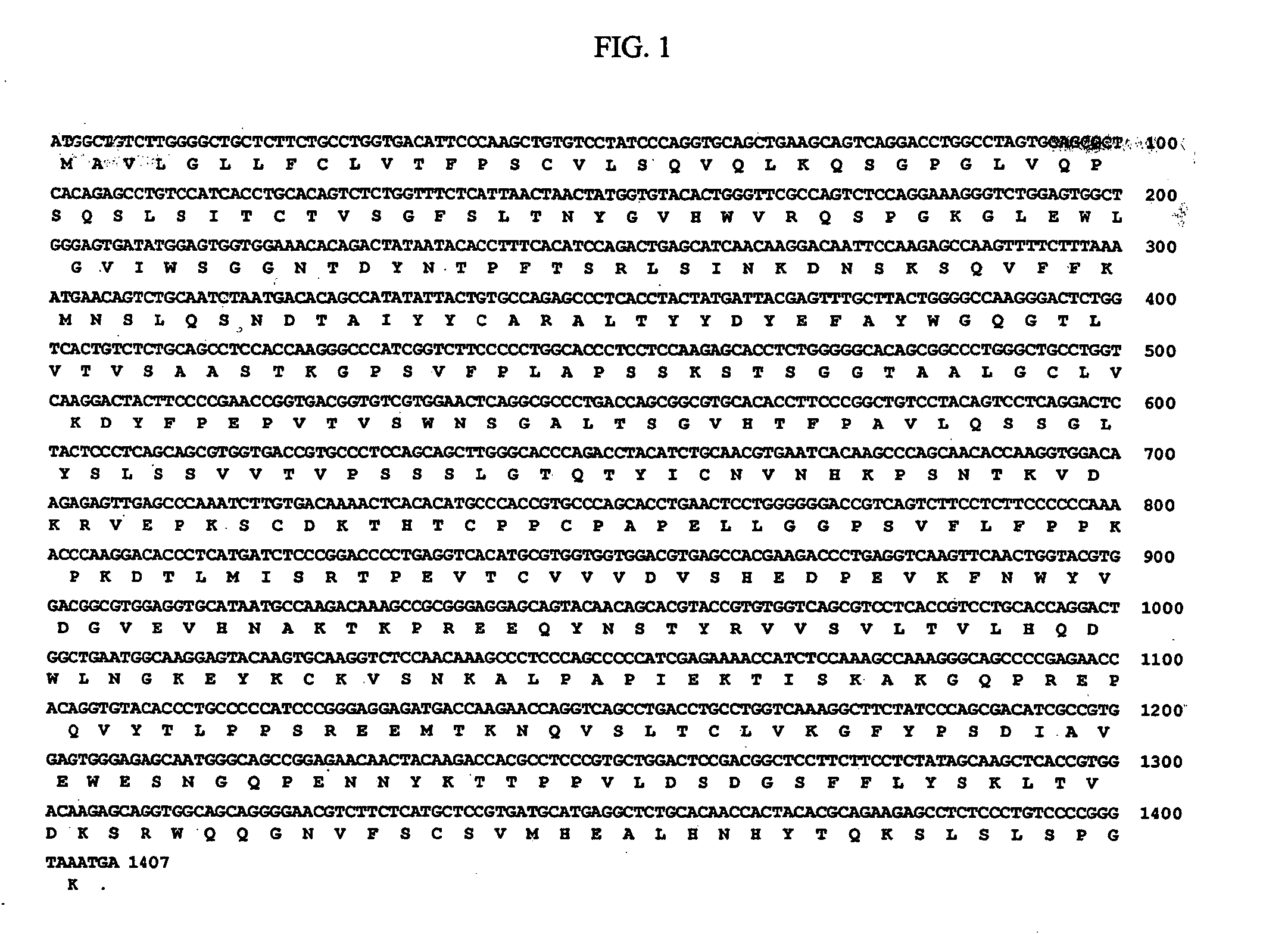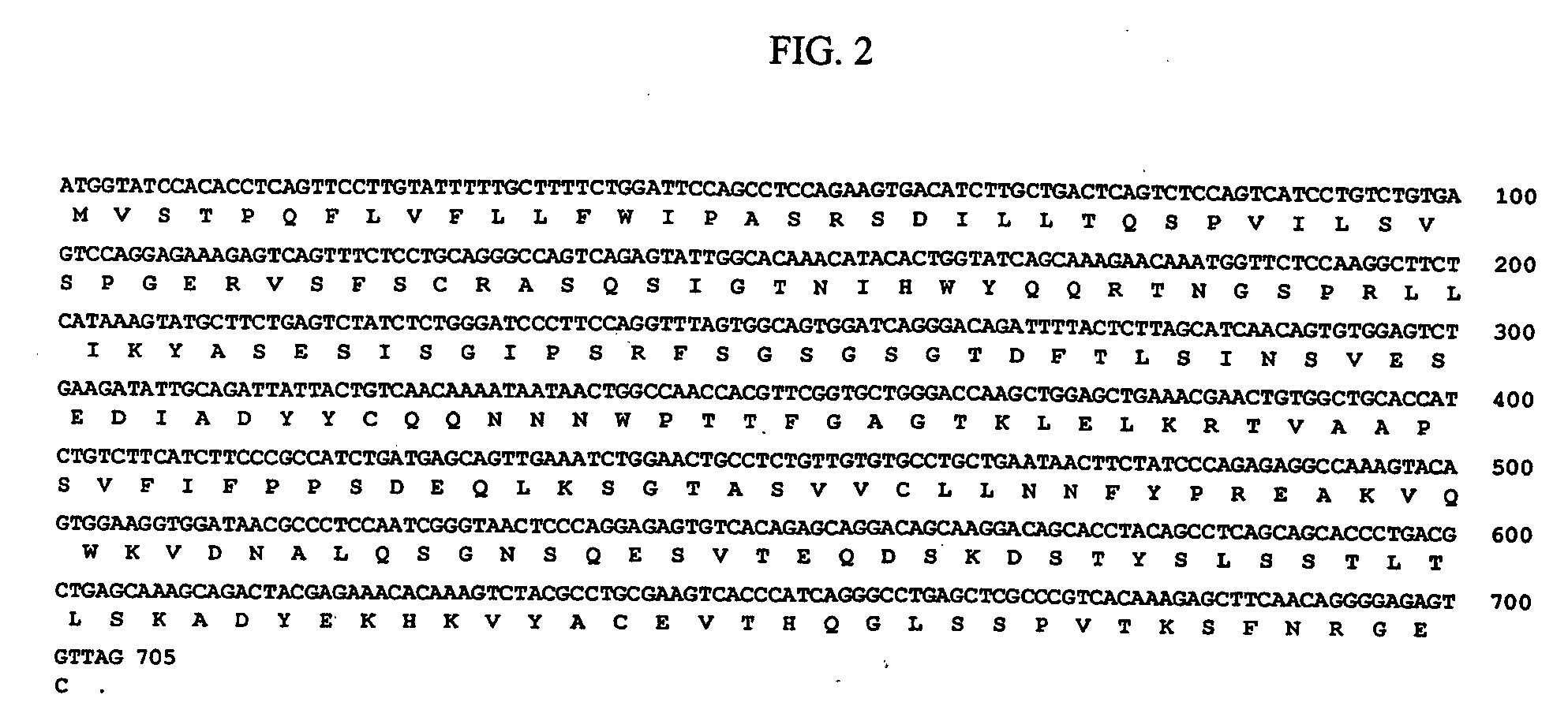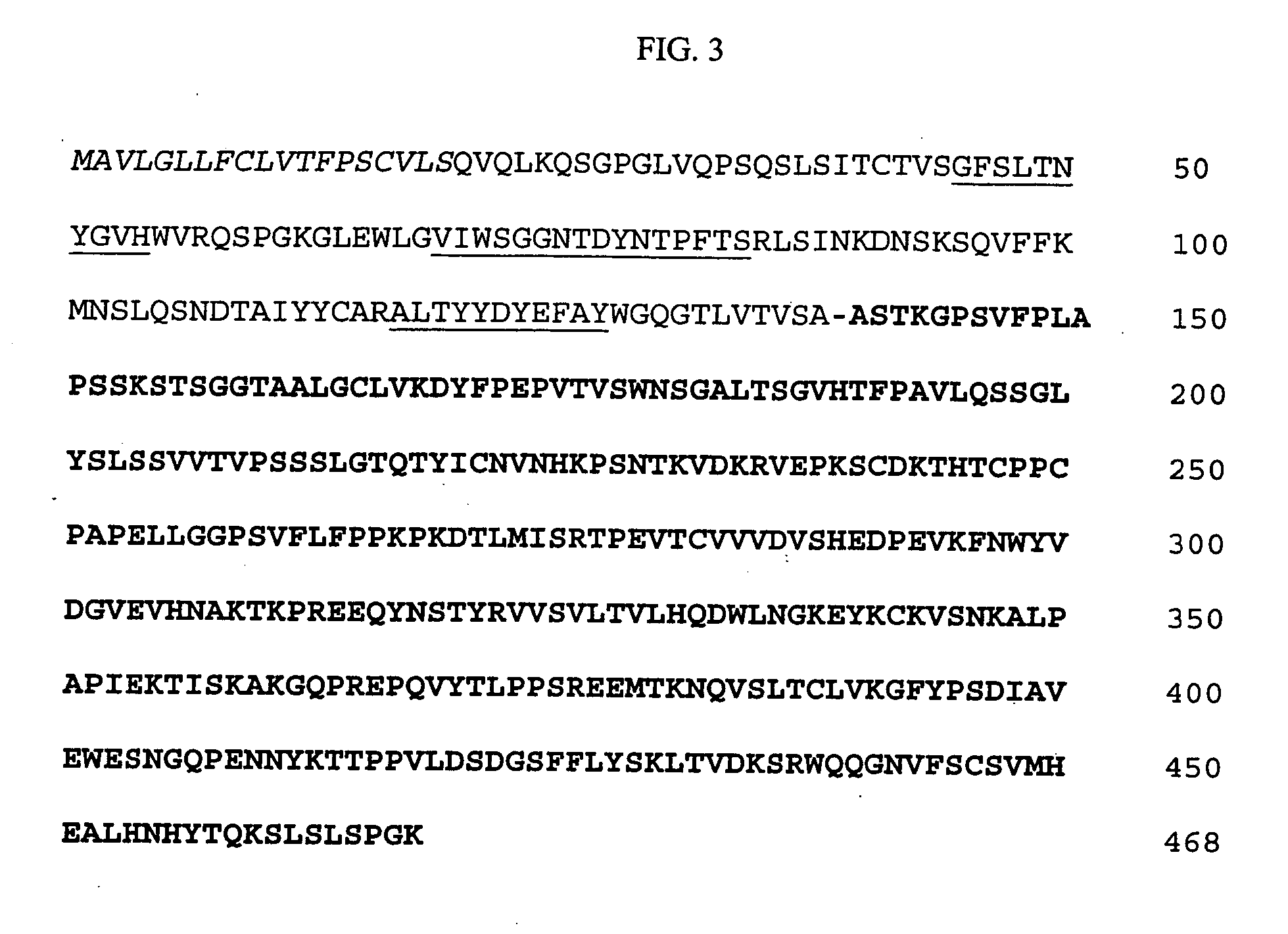Method of producing an antibody to epidermal growth factor receptor
a technology of epidermal growth factor and antibody, which is applied in the field of producing an antibody specific for epidermal growth factor receptor, can solve the problems of not achieving significant yield of antibodies, and producing egfr antibodies
- Summary
- Abstract
- Description
- Claims
- Application Information
AI Technical Summary
Benefits of technology
Problems solved by technology
Method used
Image
Examples
example 1
Producing Transformed Cells that Express EGFR Antibodies
[0042] The myeloma cell line SP2 / 0-Ag14 (ATCC CRL-1581), which is a line that was formed by fusing BALB / c spleen cells (from mouse immunized with sheep RBCs) with the P3X63Ag8 myeloma (see Shulman et al., Nature 276: 269-270 (1978)) was transformed to express EGFR antibodies. The cell line was expanded in tissue culture flasks (1L) and total cell RNA was prepared by lysing washed cells in gaunidine isothiocyanate containing 2-mercaptoethanol (25 mL), shearing the solution in a dounce homogenizer to degrade cell DNA, and layering the preparation on a CsCl cushion (10 mL). After centrifugation (24,000 rpm, 16 hrs), the RNA pellet was resuspended in TE buffer and precipitated with ethanol. The poly A (+) mRNA fraction was isolated by binding to and elution from oligo dT cellulose.
[0043] A cDNA library was prepared using the poly A(+) mRNA as template and oligo dt as primer. The second strand was synthesized by nick translation ...
example 2
Preparing and Cultivating Inoculum
[0051] Transformed cells from Example 1 were recovered into an inoculum cultivation medium that included the components listed in Table 1 (referred to herein as “Inoculum Cultivation Medium A.”)
TABLE 1IngredientAmountDulbecco's Modified Eagle's Medium (DMEM)90%NCTC-13510%Glutamine4mMBovine Insulin7.5mg / LBovine Transferrin7.5mg / LBovine Serum Albumen (BSA)1.0g / LEthanolamine30μMSelenium40nMMercaptoethanol30μMOxaloacetate150mg / L
example 3
Preparing and Cultivating an Inoculum
[0052] Transformed cells from Example 1 were recovered into an inoculum cultivation medium that included the components listed in Table 2 (referred to herein as “Inoculum Cultivation Medium B”). Inoculum Cultivation Medium B differed from Inoculum Cultivation Medium A in that bovine insulin was replaced with recombinant human insulin and bovine transferrin was replaced with an inorganic iron chelator. In addition, the concentration of amino acids, salts, and vitamins in DMEM and NCTC-135 and the concentration of glutamine were approximately doubled to that present in Inoculum Cultivation Medium A. Further, an inorganic salt, such as zinc sulfate, and an ionic surfactant, such as pluronic F68 were added to the inoculum cultivation medium.
TABLE 2IngredientAmountDMEM90%NCTC-13510%Glutamine8mMHuman Recombinant Insulin20.0mg / LInorganic chelate (inorganic iron chelator)7.5mg / LBSA1.0g / LEthanolamine30μMOxaloacetate150mg / LSelenium40nMMercaptoethanol30...
PUM
| Property | Measurement | Unit |
|---|---|---|
| pH | aaaaa | aaaaa |
| size | aaaaa | aaaaa |
| size | aaaaa | aaaaa |
Abstract
Description
Claims
Application Information
 Login to View More
Login to View More - R&D
- Intellectual Property
- Life Sciences
- Materials
- Tech Scout
- Unparalleled Data Quality
- Higher Quality Content
- 60% Fewer Hallucinations
Browse by: Latest US Patents, China's latest patents, Technical Efficacy Thesaurus, Application Domain, Technology Topic, Popular Technical Reports.
© 2025 PatSnap. All rights reserved.Legal|Privacy policy|Modern Slavery Act Transparency Statement|Sitemap|About US| Contact US: help@patsnap.com



